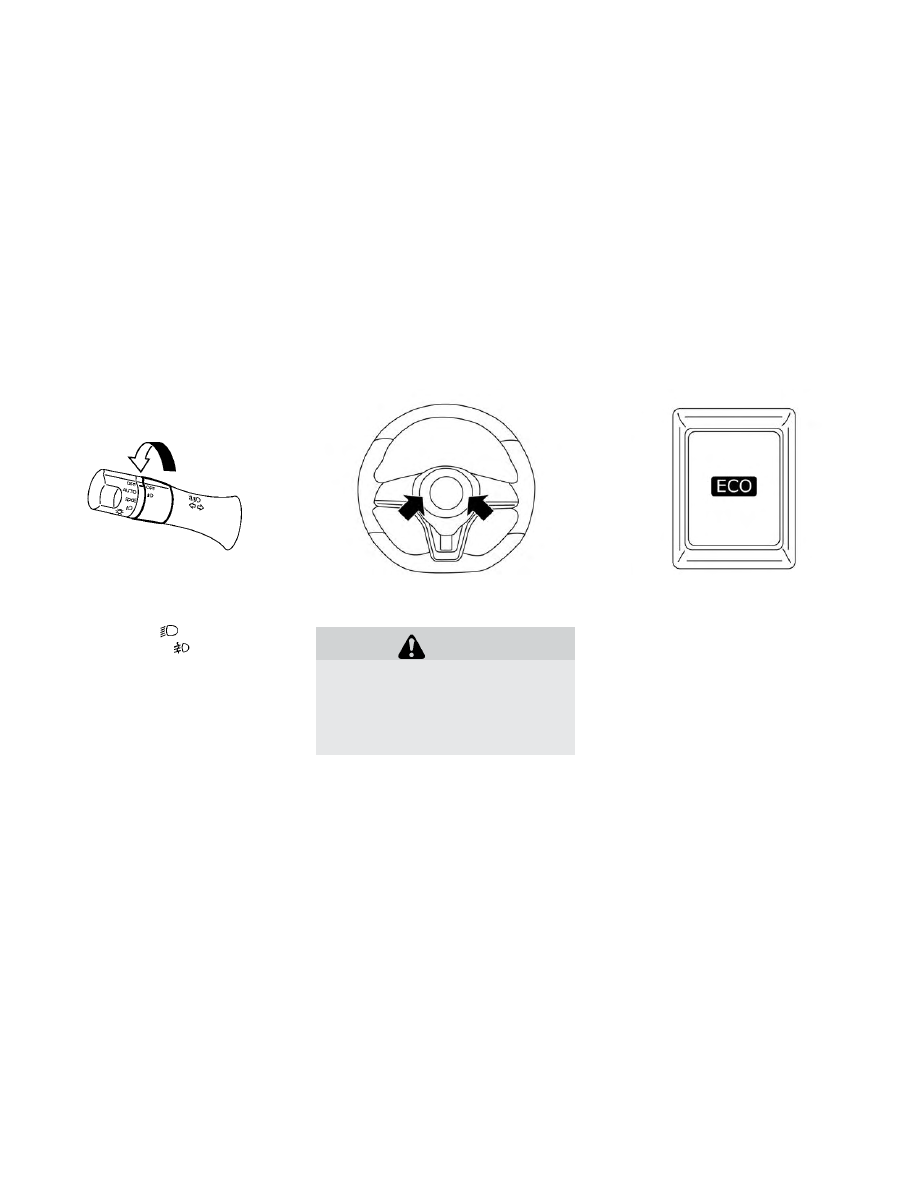Nissan Leaf (2019 year). Manual - part 14

To turn the fog lights on, rotate the head-
light switch to the
position, then ro-
tate the switch to the
position. To turn
them off, rotate the switch to the OFF posi-
tion.
The headlights must be on for the fog
lights to operate.
To sound the horn, push the center pad
area of the steering wheel.
WARNING
Do not disassemble the horn. Doing so
could affect proper operation of the
supplemental front air bag system.
Tampering
with
the
supplemental
front air bag system may result in seri-
ous personal injury.
To turn on the ECO mode, push the ECO
switch. The ECO mode indicator appears
on the meter.
To turn off the ECO mode, push the ECO
switch again. The ECO mode indicator will
turn off.
For additional information, refer to “Electric
shift control system” in the “Starting and
driving” section of this manual
FOG LIGHT SWITCH (IF SO EQUIPPED)
HORN
ECO SWITCH
2-58
Instruments and controls